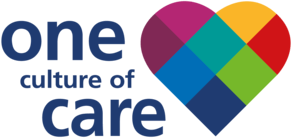Sally Grose in an occupational therapist working in the Community Rehabilitation team, part of the Support & Independence team.
As part of our early supported discharge pathway for stroke survivors, she gets to work with people as soon as they come out of hospital and continue their rehab in their own home.
She says: " This is such a rewarding job as not only do we see great improvements, but we also work alongside the stroke survivors and feel part of their journey."
Here's her story explaining just how she's helping our patients. Read on, it's inspired and achieving so much.
"I recently undertook some self-directed learning to enable me to adopt a new evidence based treatment method called ‘constraint-induced therapy’. I used this with one of my patients recently with significant positive results for the purpose of this piece, she will be called Sarah (not her real name).
"The treatment approach meant we worked together to set up an intensive programme of exercises and functional activities that Sarah had to complete daily. To ensure she worked on her stroke weakness, which was her left hand and arm, she had to constrain her right ‘good’ hand in a glove while completing the programme, and worked for 4 hours every day, for 4 weeks.
"We used a number of outcome measures to identify change following this intervention. The most important being Sarah’s goals which were: being able to use her left hand with cutlery, being able to open a door with her left hand and being able to wash and dry both her hands.
"After four weeks of Sarah completing daily exercises and being reviewed once a week to grade and adapt her exercises, Sarah has reached all her goals.
"She found the intervention approach significantly increased her confidence and her ability to use her left hand and arm and it has allowed her to participate in her meaningful roles within the home.
"This is a great example of working together to get positive results and I hope to use it more in the future."


